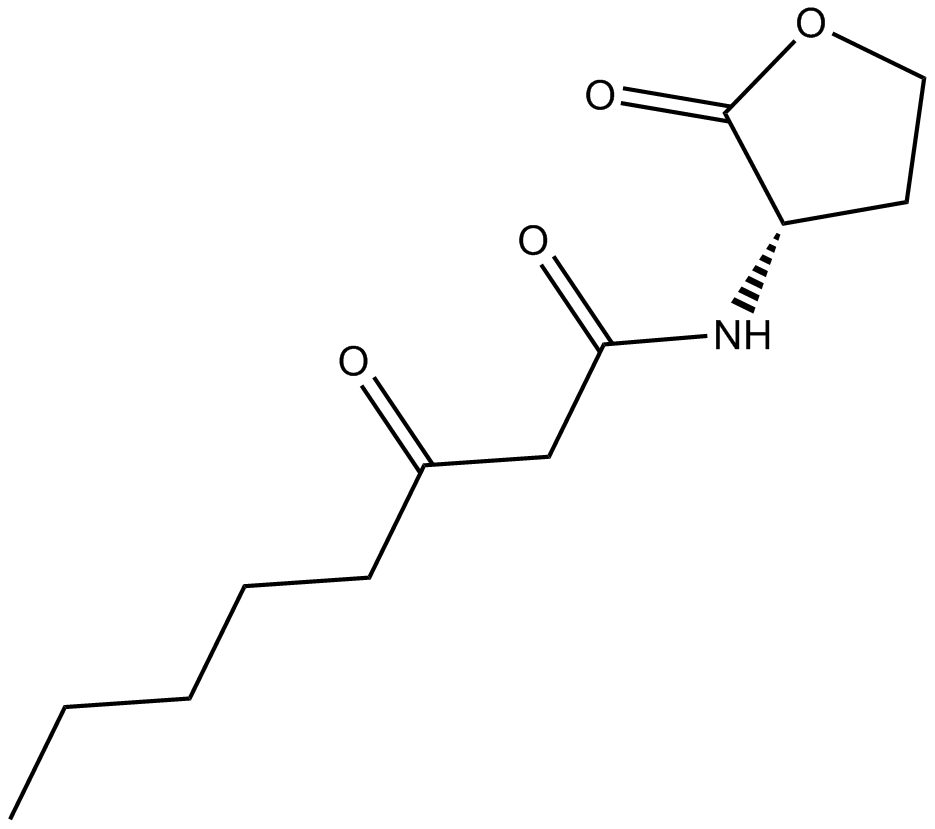N-3-oxo-octanoyl-L-Homoserine lactone (Synonyms: 3-oxo-C8-HSL,N-β-oxo-octanoyl-L-Homoserine lactone,N-(3-Oxooctanoyl)-L-homoserine; N-(3-OXOOCTANOYL)-L-HOMOSERINE LACTONE) |
| Katalog-Nr.GC14832 |
N-3-Oxo-Octanoyl-L-Homoserinlacton, ein Quorum-Sensing-Signal, ist ein Agrobacterium-Autoinducer.
Products are for research use only. Not for human use. We do not sell to patients.

Cas No.: 147795-39-9
Sample solution is provided at 25 µL, 10mM.
Quorum sensing is a regulatory system used by bacteria for controlling gene expression in response to increasing cell density.1 This regulatory process manifests itself with a variety of phenotypes including biofilm formation and virulence factor production.2Coordinated gene expression is achieved by the production, release, and detection of small diffusible signal molecules called autoinducers. The N-
References
1. González, J.E., and Keshavan, N.D. Messing with bacterial quorum sensing Microbiol. Mol. Biol. Rev. 70(4), 859-875 (2006).
2. Gould, T.A., Herman, J., Krank, J., et al. Specificity of acyl-homoserine lactone syntheses examined by mass spectrometry Journal of Bacteriology 188(2), 773-783 (2006).
3. Cegelski, L., Marshall, G.R., Eldridge, G.R., et al. The biology and future prospects of antivirulence therapies Nature Reviews.Microbiology 6(1), 17-27 (2008).
4. Penalver, C.G.N., Morin, D., Cantet, F., et al. Methylobacterium extorquens AM1 produces a novel type of acyl-homoserine lactone with a double unsaturated side chain under methylotrophic growth conditions FEBS Letters 580, 561-567 (2006).
5. Zhu, J., Beaber, J.W., Moré, M.I., et al. Analogs of the autoinducer 3-oxooctanoyl-homoserine lactone strongly inhibit activity of the TraR protein of Agrobacterium tumefaciens Journal of Bacteriology 180(20), 5398-5405 (1998).
Average Rating: 5 (Based on Reviews and 7 reference(s) in Google Scholar.)
GLPBIO products are for RESEARCH USE ONLY. Please make sure your review or question is research based.
Required fields are marked with *




















